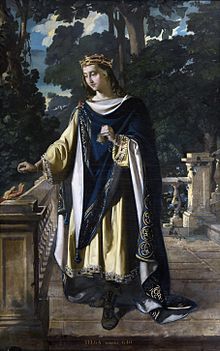Tulga
Tulga
Visigothic King
Tulga or Tulca (living 642) was Visigothic King of Hispania, Septimania and Galicia from 639, if his father died in December 639, as some sources state, to 642. Other sources have his rule beginning as early as 639 or ending as early as 641. He succeeded his father Chintila in an ultimately vain attempt to establish dynastic kingship.
You can help expand this article with text translated from the corresponding article in Spanish. (September 2016) Click [show] for important translation instructions.
|
You can help expand this article with text translated from the corresponding article in Basque. (September 2016) Click [show] for important translation instructions.
|
